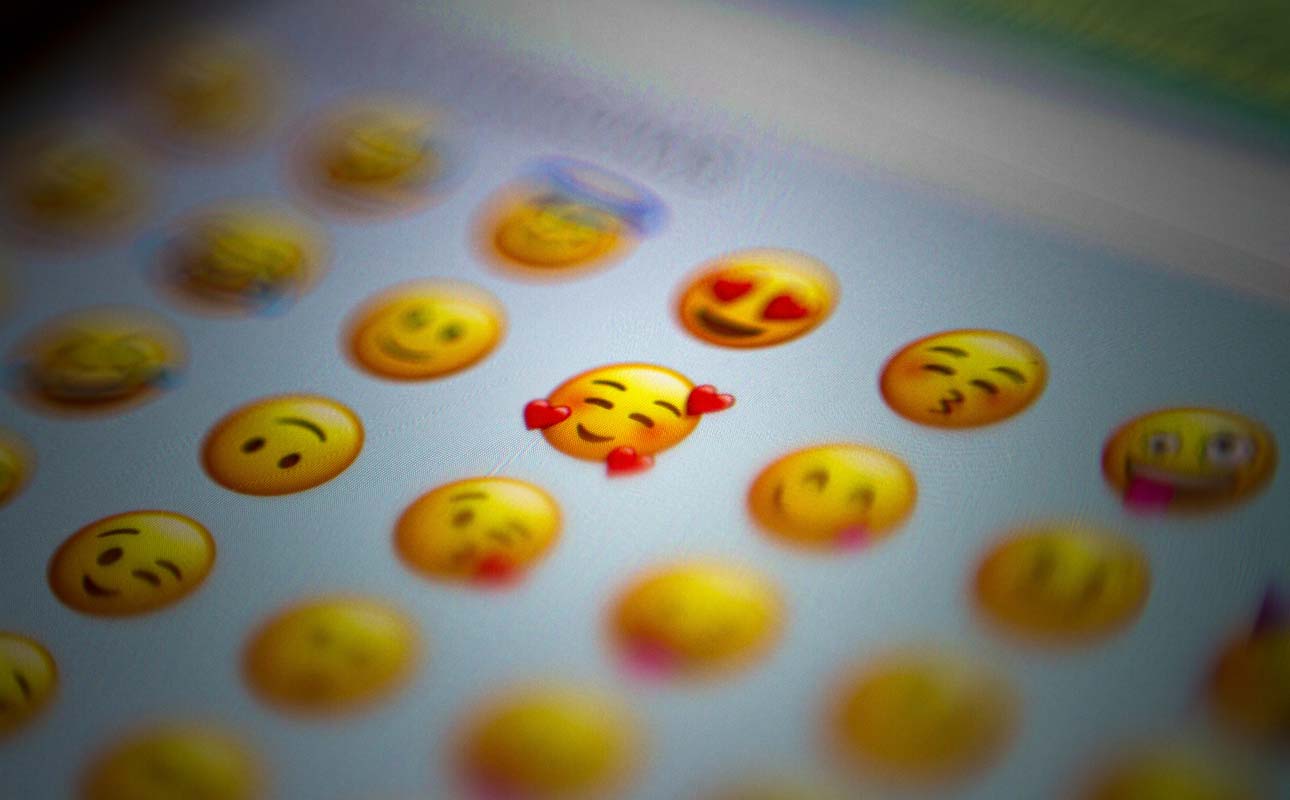From hieroglyphics to emojis: how communication has changed over time

Long ago, before people had phones, computers or even a postal service that brings mail to your house, ancient people created different types of pictures to share information with others. Then, people replaced those pictures with writing and came up with technologies that let them send messages. But today, thousands of years later, we’ve started using pictures again in the form of emojis. While emojis can’t totally replace words, they can add a lot to our messages and make it easier to tell someone how we feel.
Early origins of picture messages
Before people had any type of alphabet, they could draw pictures. Around 40,000 years ago, people all over the world were painting pictures and symbols on the walls of caves to share ideas or stories. More recently, around 12,000 years ago, people carved images into rocks; these are called petroglyphs. But probably the most famous type of ancient communication with pictures is Egyptian hieroglyphics. Around 3,200 B.C.E., ancient Egyptians created this system of writing that used pictures to represent different words, ideas or sounds. Hieroglyphics worked as a type of writing, but the symbols were hard to make compared to the letters we use today: It’s a lot quicker and easier to write “A” or “B” or “C” than it is to draw a bird, a snake or a hand.
- Fascinating Facts About Hieroglyphics
- Cave Drawings
- All About Hieroglyphics
- How Ancient Egyptians Wrote
- Fun Facts About Hieroglyphics
- Types of Rock Art: Petroglyphs and Pictographs
- The Rosetta Stone: How We Understand Hieroglyphics
Writing with alphabets
Over time, people began to drop a lot of the characters in hieroglyphics, simplifying some of the shapes and using these shapes to represent sounds. Eventually, all of the hieroglyphics were reduced to about 20 symbols, each representing a different consonant sound. This alphabet spread all over Europe and the Middle East and into Asia, where different groups of people adapted it to suit their languages. The Greeks added symbols for vowels, and their alphabet was adapted by the Romans into the alphabet we use today.
However, not everyone adopted this type of alphabet. Sometimes it made more sense to use picture-like symbols instead of ones that stand for sounds. For instance, Chinese writing is picture-based, but Chinese languages also have a lot of words that sound very similar. It would actually be hard to tell those words apart if they were written with an alphabet like ours, because they might have three different meanings for the same set of sounds.
Once everyone settled on their own form of writing that worked best for their language, they could start writing things down and sharing them with other people. That was hard at first, because not a lot of people knew how to write, and a lot of people didn’t know how to read. But once the printing press was invented, it was easier to make copies of books and give them to people. And with more access to books, people got better at reading and writing. Soon, people were writing letters to each other and hiring messengers to deliver them. Eventually, they decided to set up postal services, systems that would let them mail letters and have them delivered.
- Who Came Up with the First Letters?
- History of the Alphabet
- The Origin of the Alphabet
- Who Invented the Alphabet?
- Six Letters of the English Alphabet That Went Away
- Writing Systems of the World
- Chinese Character Facts for Kids
- Johannes Gutenberg and the Printing Press
- Pony Power: Mail Delivery by Pony Express
- A Kids’ History of the United States Postal Service
Farther and faster
Writing letters to your friends is great, but then you have to wait for the letter to get to them in the mail. Hundreds of years ago, that could take many days or weeks, depending on how far away your friends lived. People wanted faster ways to talk to each other, and in the 1800s, some big inventions helped them do that. The first invention was the telegraph, which could be used to send coded messages through a wire. That was way faster, taking a few minutes, rather than days, to send. Even better was the telephone, invented a few decades later. With a telephone, you could talk to someone far away just like they were standing next to you. At first, phones were mounted to the wall, so you both had to go to a phone and stand there to talk to each other. But in the 1990s, cellphones started becoming common. With a cellphone, you could call people from anywhere.
Talking on the phone is great, but sometimes, you don’t want to make your friend drop everything and have a whole conversation with you. Sometimes, you just want to send them a quick note. That’s why texting was invented in 1992. Now, you could type in a short message on your cellphone and send it to someone.
- The Telegraph and Morse Code
- Build Your Own Telegraph
- Morse Code
- Alexander Graham Bell
- How Do Phones Work?
- The Evolution of Telephones
- The Invention of Mobile Phones
- The First Text Message
Connecting online
The 1990s were also a time when people started getting access to the internet. Now, people could send each other emails or use instant messaging and chat rooms to talk in real time. But there was one problem with all of this text-based talking. Text doesn’t have a tone. To fix this, people came up with emoticons. Emoticons are little pictures of faces made with the characters on your keyboard. For example, tip your head to the left and look at this: :-) . It’s a smiley face! Sometimes, you need an emoticon to show the tone of what you’re saying, so people don’t misunderstand you.
- Ten Instant Messaging Services That Used to Be Popular
- Timeline of the History of Email
- Email Etiquette for Students
- What Do Emoticons Mean?
- Happy Birthday, Emoticons
Texting and tweeting
In 1999, as more and more people were texting and social media sites were starting to get really popular, emoticons got their own shortcut. That’s when emojis were invented. Now, instead of typing two or three characters to make a smiley face, you could just tap on a picture of a smiley face and drop it into your text message or social media post. And emojis aren’t just tiny pictures of smiley faces and frowny faces: There are hundreds of emojis, from a cat to a waffle to the Statue of Liberty. We’re not about to go back to the days of hieroglyphics, but emojis can be neat tools to help our short messages communicate more meaning.



